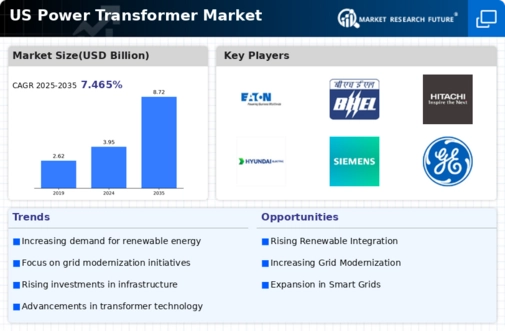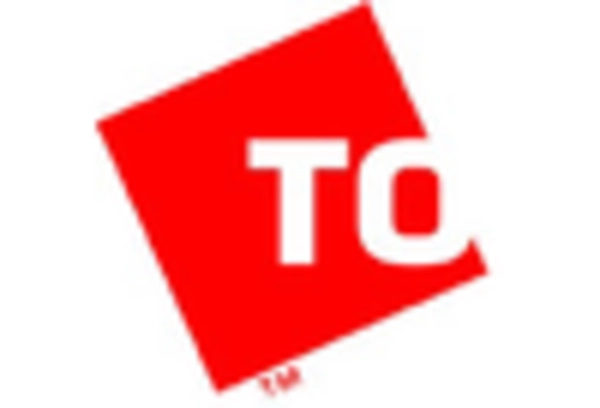Aging Infrastructure and Upgrades
The aging electrical infrastructure in the US presents a significant driver for the power transformer market. Many existing transformers are nearing the end of their operational lifespan, necessitating replacements and upgrades. The US Department of Energy estimates that over 70% of transformers in use are over 25 years old, which raises concerns about reliability and efficiency. This situation creates a substantial opportunity for the power transformer market to provide modern, efficient solutions that enhance grid performance. Investments in upgrading infrastructure are projected to reach $100 billion by 2030, further stimulating demand for advanced transformer technologies that can support a more resilient and efficient power grid.
Rising Demand for Renewable Energy
The increasing shift towards renewable energy sources in the US is driving the power transformer market. As states implement policies to reduce carbon emissions, the integration of solar and wind energy into the grid necessitates advanced transformer technology. This transition is expected to boost the market, with projections indicating a growth rate of approximately 6.5% annually through 2030. The power transformer market must adapt to handle the variable nature of renewable energy, requiring transformers that can efficiently manage fluctuating loads and maintain grid stability. Furthermore, the need for energy storage solutions, such as battery systems, further emphasizes the importance of reliable transformers in supporting renewable energy infrastructure.
Regulatory Compliance and Standards
The power transformer market is increasingly influenced by regulatory compliance and evolving standards in the US. Government agencies are implementing stricter efficiency standards for electrical equipment, including transformers, to promote energy conservation. The Department of Energy has set regulations that require new transformers to meet specific efficiency criteria, which is expected to drive innovation within the power transformer market. Companies that adapt to these regulations by developing energy-efficient transformers may gain a competitive edge. The market could see a shift towards more advanced technologies, with an anticipated increase in demand for transformers that comply with these new standards, potentially leading to a market growth of 5% annually.
Increased Electrification of Transportation
The electrification of transportation, particularly with the rise of electric vehicles (EVs), is significantly impacting the power transformer market. As the US government promotes EV adoption through incentives and infrastructure development, the demand for charging stations is surging. This trend necessitates the installation of robust transformers capable of handling increased electrical loads. The power transformer market is likely to see a growth in demand for transformers that can support high-capacity charging stations, with estimates suggesting that the market could expand by 8% annually as EV infrastructure develops. This shift not only supports the transportation sector but also aligns with broader sustainability goals.
Technological Innovations in Transformer Design
Technological innovations in transformer design are reshaping the power transformer market. Advances in materials science, such as the development of amorphous steel cores, are enhancing transformer efficiency and reducing energy losses. Additionally, smart transformer technologies that incorporate digital monitoring and control systems are gaining traction. These innovations allow for real-time data analysis, improving maintenance practices and operational efficiency. The power transformer market is likely to benefit from these advancements, with a projected growth rate of 7% annually as utilities seek to modernize their infrastructure. The integration of smart technologies not only enhances performance but also aligns with the increasing demand for grid modernization and reliability.

















Leave a Comment